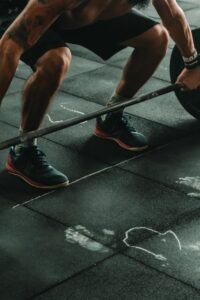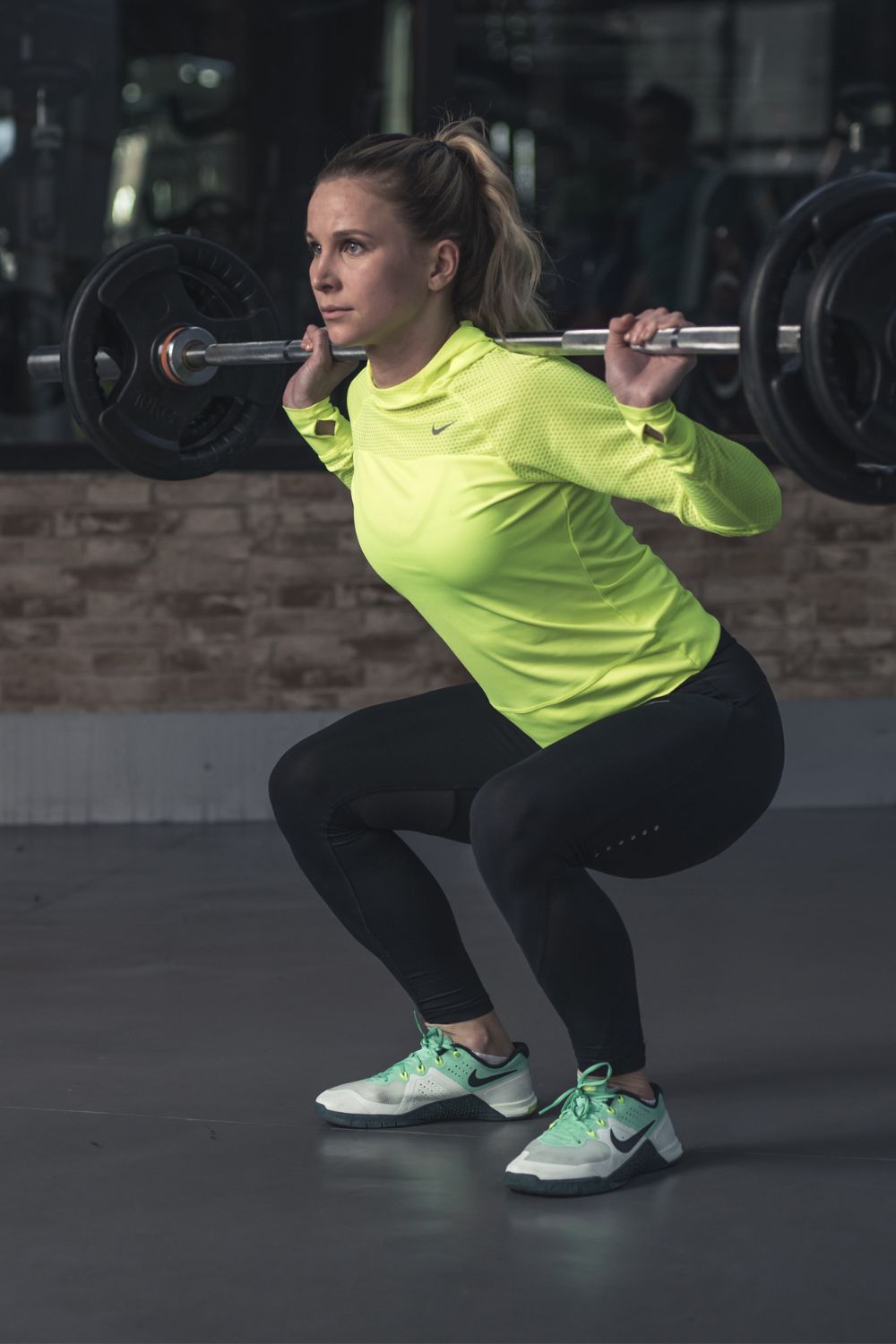Are your knees shaking and buckling when you try to squat? Don’t worry; you’re not alone! Many individuals encounter this challenge while attempting squats. It’s essential to address this issue to prevent potential injuries and optimize your workout. In this article, we will delve into the reasons behind shaky knees during squats and provide you with effective solutions to overcome this hurdle.
Understanding the Problem
When you experience shaky knees or knee buckling during squats, it can be discouraging, and it might make you hesitant to continue with your training. However, it’s crucial to comprehend the underlying causes of this issue before you can tackle it head-on.
1. Muscle Weakness
One of the leading causes of shaky knees during squats is muscle weakness, particularly in the quadriceps, hamstrings, and glutes. These muscles play a pivotal role in stabilizing your knees during squats. If they’re not strong enough, your knees are more likely to wobble.
2. Poor Form
Improper squat form can also contribute to knee instability. If you’re not maintaining the correct posture and alignment, it can put unnecessary stress on your knees, leading to shaking and buckling.
3. Overtraining
Overtraining or pushing your limits too hard can lead to fatigue and muscle weakness. This, in turn, can result in shaky knees during squats. Balancing your workout routine is crucial to avoid overexertion.
4. Injury or Previous Knee Problems
If you’ve had knee injuries or issues in the past, they might make your knees more prone to shaking or buckling during squats. It’s essential to take these factors into consideration when addressing the problem.
Solutions to Stop Knees from Shaking and Buckling
Now that we understand the possible causes, let’s explore practical solutions to help you stabilize your knees during squats and enhance your workout experience.

Strengthening Exercises
Focus on Quadriceps, Hamstrings, and Glutes
To address muscle weakness, incorporate strength training exercises that target your quadriceps, hamstrings, and glutes. These exercises can include squats, lunges, leg presses, and deadlifts. Gradually increase the weight and intensity to build strength over time.
Bodyweight Exercises
In addition to using weights, bodyweight exercises like squats, step-ups, and glute bridges can help improve the stability of your knees. These exercises enhance muscle control and balance, reducing the likelihood of shaky knees.
Correct Your Form
Maintain Proper Alignment
Ensuring correct form is essential for squatting without shaky knees. When you squat, make sure your knees don’t go beyond your toes. Keep your chest up, back straight, and engage your core. If you’re unsure about your form, consider working with a trainer or using a mirror for feedback.
Depth Control
Limit the depth of your squats until you’ve built sufficient strength and stability. Gradually increase the depth as your muscles become stronger. This approach will reduce the strain on your knees.
Rest and Recovery
Listen to Your Body
Overtraining can lead to shaky knees and decreased performance. Pay attention to your body and incorporate rest days into your workout routine. Your muscles need time to recover and grow stronger.
Stretch and Mobility
Incorporate stretching and mobility exercises into your routine to prevent muscle tightness, which can contribute to shaky knees. Focus on your hip flexors, hamstrings, and calves to improve flexibility.
Supportive Gear
Knee Sleeves and Wraps
Consider using knee sleeves or wraps to provide additional support to your knees during squats. These can help stabilize the joint and reduce shaking. However, rely on them as a temporary solution while you work on strengthening your muscles and improving your form.
Specialized Assistance
Physical Therapy
If you have a history of knee injuries or persistent issues, consult a physical therapist. They can provide personalized exercises and guidance to address your specific concerns and prevent knee instability during squats.
Gradual Progression
Patience is Key
It’s essential to be patient with your progress. Building strength and improving form take time. Set achievable goals and celebrate small victories along the way. Don’t rush the process to avoid potential setbacks.
Nutrition and Hydration
Fuel Your Muscles
Ensure you’re providing your body with the right nutrition and hydration. Protein, vitamins, and minerals are crucial for muscle recovery and growth. Staying hydrated is equally important to prevent muscle cramps and instability.
Conclusion
Dealing with shaky knees and knee buckling during squats can be a challenging journey, but with dedication and the right approach, you can overcome this hurdle. Strengthening your muscles, improving your form, and paying attention to your body’s needs are essential steps to ensure that your knees remain stable during squats. Remember to consult a healthcare professional or fitness expert if you have persistent concerns or a history of knee issues. By following these tips and maintaining a positive mindset, you’ll be well on your way to squatting with confidence and power. Don’t let shaky knees hold you back; take the first step today towards stronger, more stable squats.
A comparison tabular on this
Here’s a simple comparison table to highlight the key elements in addressing shaky knees during squats:
| Factors | Problem | Solutions |
|---|---|---|
| Muscle Weakness | Causes knee instability | – Focus on Quadriceps, Hamstrings, and Glutes
– Bodyweight Exercises |
| Poor Form | Increases knee stress | – Maintain Proper Alignment
– Depth Control |
| Overtraining | Leads to fatigue | – Listen to Your Body
– Stretch and Mobility |
| Injury/Previous Issues | Increases vulnerability | – Consider Supportive Gear
– Seek Professional Assistance |
| Gradual Progression | Patience is crucial | – Set Achievable Goals
– Be Patient |
| Nutrition/Hydration | Impacts muscle recovery | – Provide the right nutrients and hydration |
This table succinctly outlines the problems associated with shaky knees during squats and the corresponding solutions to address each concern.
Final words
In your quest to conquer shaky knees and knee buckling during squats, remember that your journey to success is a marathon, not a sprint. Embrace the process, stay committed, and be patient with yourself. Strengthening your muscles, improving your form, and taking care of your body through rest and proper nutrition are the cornerstones of your success.
Never hesitate to seek professional guidance if you have a history of knee issues or persistent concerns. They can provide tailored assistance to ensure your safety and progress.
With dedication and a positive mindset, you can overcome shaky knees and unlock your potential for more robust and confident squats. Don’t let this challenge deter you; embrace it as an opportunity for growth and improvement. Your journey to stable and powerful squats begins today. Happy squatting.
External Resources
To further your understanding and explore additional tips, you can refer to the following resources:

Hey there, it’s Mike Rrsq, the Editor-in-Chief over at Jsquat.com, and I’m absolutely obsessed with all things squat fitness! I’ve been lucky enough to get some serious recognition for my work in this field. With a solid background in the fitness and wellness industry, I’ve been there right from the get-go, helping shape this website into what it is today.
You see, I’m not just the boss around here; I’m also a passionate contributor. I love sharing my insights through my articles, and trust me, they’re not your run-of-the-mill stuff. Each piece I write is a labor of love, filled with my expertise and real-world experience in the fitness universe. So, if you’re into fitness and looking for some inspiration, you’re in the right place!

